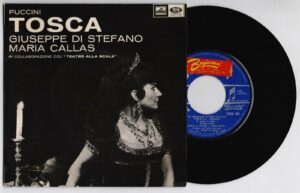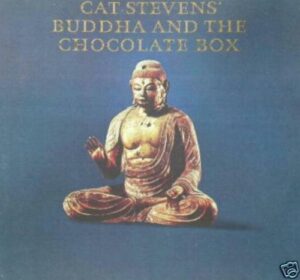Descrizione
PREMESSA: LA SUPERIORITA’ DELLA MUSICA SU VINILE E’ ANCOR OGGI SANCITA, NOTORIA ED EVIDENTE. NON TANTO DA UN PUNTO DI VISTA DI RESA, QUALITA’ E PULIZIA DEL SUONO, TANTOMENO DA QUELLO DEL RIMPIANTO RETROSPETTIVO E NOSTALGICO , MA SOPRATTUTTO DA QUELLO PIU’ PALPABILE ED INOPPUGNABILE DELL’ ESSENZA, DELL’ ANIMA E DELLA SUBLIMAZIONE CREATIVA. IL DISCO IN VINILE HA PULSAZIONE ARTISTICA, PASSIONE ARMONICA E SPLENDORE GRAFICO , E’ PIACEVOLE DA OSSERVARE E DA TENERE IN MANO, RISPLENDE, PROFUMA E VIBRA DI VITA, DI EMOZIONE E DI SENSIBILITA’. E’ TUTTO QUELLO CHE NON E’ E NON POTRA’ MAI ESSERE IL CD, CHE AL CONTRARIO E’ SOLO UN OGGETTO MERAMENTE COMMERCIALE, POVERO, ARIDO, CINICO, STERILE ED ORWELLIANO, UNA DEGENERAZIONE INDUSTRIALE SCHIZOFRENICA E NECROFILA, LA DESOLANTE SOLUZIONE FINALE DELL’ AVIDITA’ DEL MERCATO E DELL’ ARROGANZA DEI DISCOGRAFICI .
PHIL WOODS
and his european rhythm machine
Disco LP 33 giri , Music Parade / Cetra, LEL 84 , 1973 , Italia
OTTIME CONDIZIONI, vinyl ex++/NM , cover ex++, two light and small pencil marks on cover / 2 minuscoli e lievi segni a biro in copertina
What is a European Rhythm Machine?
Or a Chromatic Banana?
We’re not sure either, but this album is sure to answer these
questions and more. This
recording was made in 1970 in Europe, and includes Gordon Beck, Henri
Texier, Daniel Humair, and of course, Phil Woods. This album is a sonic
voyage of strange and wonderful proportions, a great recording
from the master sax player.
Uscito anche in una versione intitolata “CHROMATIC BANANA” , questo album del 1970 fa parte della discografia europea del virtuoso del sax Phil Woods, insieme alla EUROPEAN RHYTHM MACHINE , formazione che ha calpestato il suolo e deliziato le platee del vecchio contintente tra il 1968 ed il 1973, con una moderata impennata di notorietà anche in Italia ad inizio anni settanta attraverso il passaggio allo show televisivo di Franco Cerri detto l’ uomo in ammollo, evento che ha indotto la Cetra a pubblicare questo disco nel catalogo popolare MUSIC PARADE, portando anche abbastanza sfiga alla band che immediatamente dopo si è sciolta ed ognuno è andato per la sua strada a seguire le proprie attitudini, come ad esempio “passerottino” Woods che avendo accumulato parecchi debiti è dovuto andare a fare gli assoli per Billy Joel, poverino
|
|
Philip Wells Woods (born November 2, 1931 in Springfield, Massachusetts)
is an American jazz bebop alto saxophonist, clarinetist, bandleader
and composer.
Phil Woods (all’anagrafe: Philip Wells Woods) (Springfield
(Massachussets), 2 novembre 1931) è un sassofonista
statunitense,chiamato, per la sua
importanza nel campo del sassofono jazz, The
New Bird.
Etichetta: Music Parade Cetra
Catalogo: LEL 84
Matrici : MLCS 7922 / MLCS 7923
Data matrici : 14/10/71
- Supporto:vinile 33 giri
- Tipo audio: stereomono
- Dimensioni: 30 cm.
- Facciate: 2
- Soft cover sleeve, poly inner sleeves
Track listing
Side one
1. Chromatic Banana
2. Ultimate Choice *
Side two
1. Sans Melodie *
2. The Last Page *
3. A Look Back
4. The Day When The World… *
* This song was written by Gordon.
Personnel
Gordon Beck: Electric Piano, Piano, Organ, Bells, Percussion, Voice
Daniel Humair: Drums, Percussions, Remo Roto-Tom, Woodblocks
Henri Texier: Acoustic Bass, Flutes, African Percussion, Voice
Phil Woods: Alto Sax, Varitone, Clarinet, English Recorder, Percussion,
Voice
An excellent album of funky electric jazz — and possibly the best one
that Phil Woods cut with his European group! The quartet’s a very hip
group that’s way hipper than its clunky name — with Gordon Beck on
electric piano and organ, Daniel Humair on percussion and drums, and
Henri Texier on bass, flute, and African percussion — all
instrumentalists who dip heavily into the deep bag of their mighty
talents for the date, helping to push Phil’s music into some very cool
new territory! The album cooks a lot harder than Woods’ previous MGM
date with the Rhythm Machine group in Europe — and has a really
freewheeling vibe, and a sound that’s almost outside at points. All
tracks are long, with a modal electric approach that’s very nice — and
funky in the best parts — and titles include “Chromatic Banana”,
“Ultimate Choice”, “The Last Page”, and “The Day When The World”.
Woods studied music with Lennie Tristano, who influenced him greatly, at the Manhattan School of Music and at The Juilliard School. His
friend, Joe Lopes, coached him on clarinet as there was no saxophone
major at Juilliard at the time. Although he did not copy Charlie “Bird” Parker, bop’s greatest saxophonist, he was
known as the New Bird, a label which was also attached to other alto
players such as Sonny Stitt and Cannonball Adderley at one time or
another in their careers.
After moving to France in 1968, Woods led The European Rhythm
Machine, a group which tended toward avant-garde jazz. He returned to the United States in 1972
and, after an unsuccessful attempt to establish an electronic group, he
formed a quintet which was still performing, with some changes of
personnel, in 2004. As his theme, Woods uses a piece titled “How’s Your
Mama?”
In 1979, Woods made the recording, More Live, at the Armadillo World Headquarters in
Austin, Texas. Perhaps his best known recorded work as a sideman is a pop
piece, his alto sax solo on Billy Joel’s “Just the Way You Are.” He also played the alto sax
solo on Steely Dan’s “Doctor Wu,” from their critically acclaimed 1975
album Katy Lied, as well as Paul Simon’s 1975 hit, Have a Good
Time.
Although Woods is primarily a saxophonist he is also a fine clarinet
player and solos can be found scattered through his recordings. One good
example is his clarinet solo on Misirlou on the album Into
The Woods (see discography below).
Woods’ recordings have been nominated for seven Grammy awards and have won four.
Phil Woods married Chan Parker, the widow of Charlie Parker, and was stepfather to Chan’s daughter, Kim.
Woods, along with Rick Chamberlain and Ed Joubert founded the
organization Celebration of the Arts (COTA) in 1978 late one
night in the bar at the Deerhead Inn in Delaware Water Gap. The
organization would eventually become the Delaware Water Gap Celebration
of the Arts. Their initial goal was to help foster an appreciation of
jazz and its relationship to other artistic disciplines. Each year, the
organization hosts the Celebration of the Arts
Festival in the town of Delaware Water Gap in
September.
Biografia
Esce dalla scuola cool jazz di Lennie Tristano, frequentando contemporaneamente la Juilliard School e diplomandosi in clarinetto,
poicé all’epoca non c’era ancora una classe di sassofono.
Pur appartenendo ad una generazione influenzata fortemente dal clima be-bop
di Charlie Parker, non copiò mai il suo stile, ma dirigendosi
verso i fraseggi di Sonny Stitt e Cannonball Adderley.
La sua vicinanza a Parker però è sottolineata anche dall’aver sposato
la vedova del grande sassofonista, Chan Richardson Parker. Il suo primo
ingaggio che lo porta ad essere fra i grandi della musica, è del 1956, anno in
cui suona in una band con Kenny
Dorham, Conte Candoli,
Al Cohn e la
sezione ritmica di Sarah Vaughan. Acquisisce altra celebrità con
l’orchestra di Dizzy Gillespie, con il Friedrich Gulda Combo (1957), con il
quintetto di Buddy Rich e con la big band di Quincy
Jones che lascia solo nel 1961. In
seguito è nella big band di Benny
Goodman a partire dal 1962, con cui resta per 6 anni. Nel 1968 si sposta
in Europa
con un progetto di jazz d’avanguardia, l’European Rhythm Machine
(con George Gruntz, Gordon Beck, Henri Texier e
Daniel Humair); nel 1972 torna
negli Stati Uniti e apre un altro progetto,
questa volta però di jazz elettrico, avendo pur tuttavia poco successo.
Poco dopo però crea un gruppo che, con diversi cambiamenti di organico
nel corso degli anni, è durato fino al 2004: esso ha
annoverato nelle sue fila musicisti come Tom Harrell, Mike Melillo,
Steve Gilmore,
Bill Goodwin e
Hal Galper.
A partire dal 1955 ha suonato con alcuni dei maggiori musicisti del
‘900 come Charlie Barnet,
Jimmy Raney, George
Wallington, Gene Quill, Dizzy Gillespie, Buddy
Rich, Quincy Jones, Benny
Goodman, Sonny Rollins, Benny
Carter, Thelonious Monk, Lee
Konitz, Tito Puente, Dizzy Gillespie, Clark
Terry, Jon Hendricks, Tommy Flanagan, Red Mitchell,
Tom Harrell, Billy
Joel, Paul Simon, Stephane Grappelli, Louie
Bellson, Steely Dan e Michel Legrand.
Dal grande pubblico è però conosciuto per aver suonato il solo di sax
al fianco di Billy Joel in Just the way you are e per
aver vinto 4 Grammy Awards su 7
nominations.



